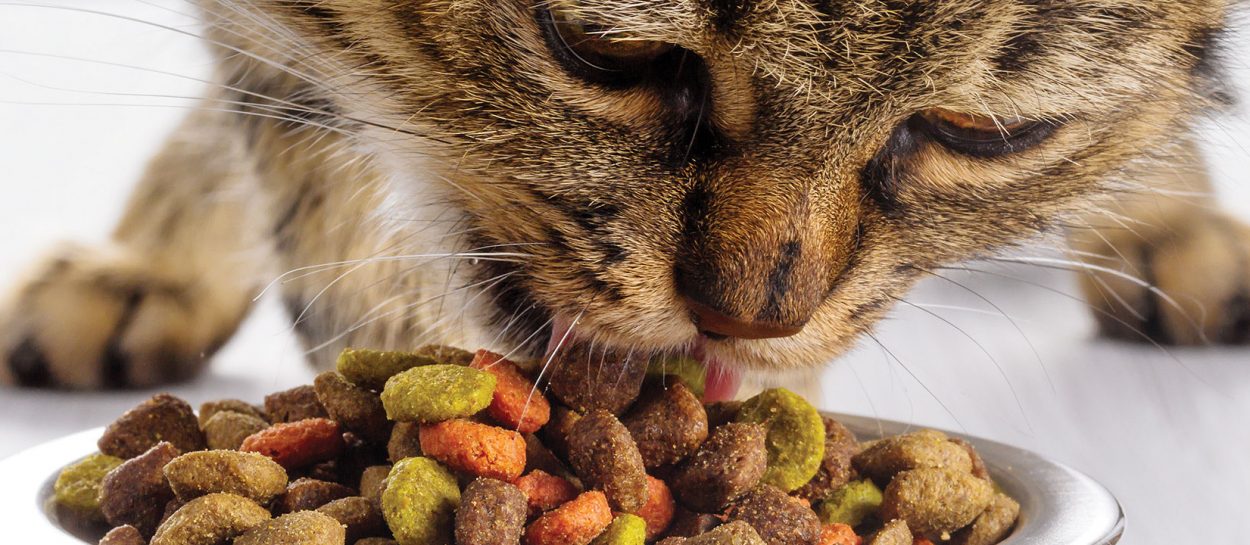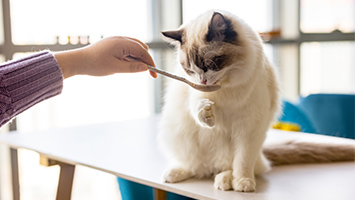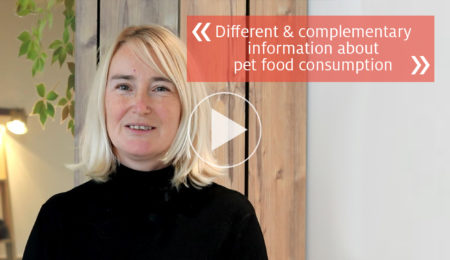Make it accessible and uniform
Pets respond best to kibbles when palatants are as accessible as possible to their nose and tongue. Moreover, they can tell when coatings are not applied evenly. Cats, for instance, will turn up their nose at kibbles that are not properly coated.

- Each step of the coating procedure is conducted in a way to maximize the homogeneity and accessibility of palatants.
Respect the sequences
The order in which fat and palatants are applied directly affects palatant accessibility and performance. The goal is to ensure that palatants do not become encapsulated in the fat.

Moreover, the amount of time spent spreading fat and palatants on kibbles determines how thoroughly they bind to the kibble surface as well as how homogeneously the coating is distributed.
- For best results, apply the fat, the liquid palatant and the powder palatant sequentially.
- Allow sufficient time for each component to bond thoroughly to the kibble before applying the next.
Dose with the right equipment
To reach your palatability target without going over budget, you need a precise dosage of fat, liquid palatant and powder palatant. The equipment you use is vital to success.
Volumetric pumps have proven to be more accurate to dose fat and liquid palatants. They have consistent and efficient performance because their flow rate remains constant and smooth whatever the pressure. If correctly calibrated according to liquid characteristics – density, temperature and viscosity – as well as for pipe configuration between pump and coater, they are ideal for liquid dosing applications.
For powder application, loss-in-weight feeders are the best solution to deliver a consistent amount. In this type of equipment, the speed of the screw(s) delivering the powder is continuously adjusted with relation to its measured weight loss per second.
- Prefer well-calibrated volumetric pumps to dose liquid palatants and fat.
- Favor loss-in-weight feeders to dose powder palatants.
Spread widely and steadily
Effective spreading is another key to coating success. Fat, liquid palatants and dry palatants should be distributed on a large surface of kibbles for a sufficient period of time to ensure direct contact with the maximum number of kibbles.

For liquid and fat application, choosing the right nozzles allows you to dispense a consistent amount over a wide area. Moreover, using several nozzles of different capacities, separated with intermediate pneumatic valves, allows for greater flexibility depending on the flow rate needed. Finally, it is also important to carefully position the nozzles in the coater so the spray is aimed toward kibbles in motion.
Powder coating is improved with the use of distributors. Vibratory spreaders, for instance, allow you to spread dry palatant over a large surface with a consistent uninterrupted flow, ensuring direct contact with the maximum number of kibbles.
- For consistent application, spray fat and palatants over a large surface area of kibbles for approximately 60 seconds.
- For fat and liquid palatant, use several nozzles separated with pneumatic valves to easily control flow and spray shaping.
- Use vibratory distributors to ensure a constant and continuous flow of powder.
Mix and remix
Mixing time and intensity are equally important to ensure adequate distribution of fat and palatants over the entire surface area of each kibble. Mixing for too short a period can result in kibbles that are unevenly coated. Mixing at too great an intensity can cause kibbles to break or disintegrate into powder.
- Mix kibbles for at least 45 to 60 seconds after each spreading sequence to ensure optimized exchange of ingredients.
- Control mixing intensity to avoid kibble breakage and dust creation.
Track the palatant
If you follow the above guidelines, your coating should be close to perfection. But if you’re still doubtful, methods exist to assess the quality of your coating procedure. Tracers can be used to measure the real amount of dry palatant applied to individual pieces of kibble. This allows you to accurately monitor the performance of your process to ensure that the capital you invest in palatability is not stuck somewhere in a pipe!
Take-home points
- Accessibility of palatants on the surface of the kibble, as well as coating homogeneity, is crucial for palatability performance.
- Dosage of fat and palatants, spreading surface, duration of spreading, length of mixing time, and intensity of the mixing process are key parameters to ensure homogeneous coating.





* required fields